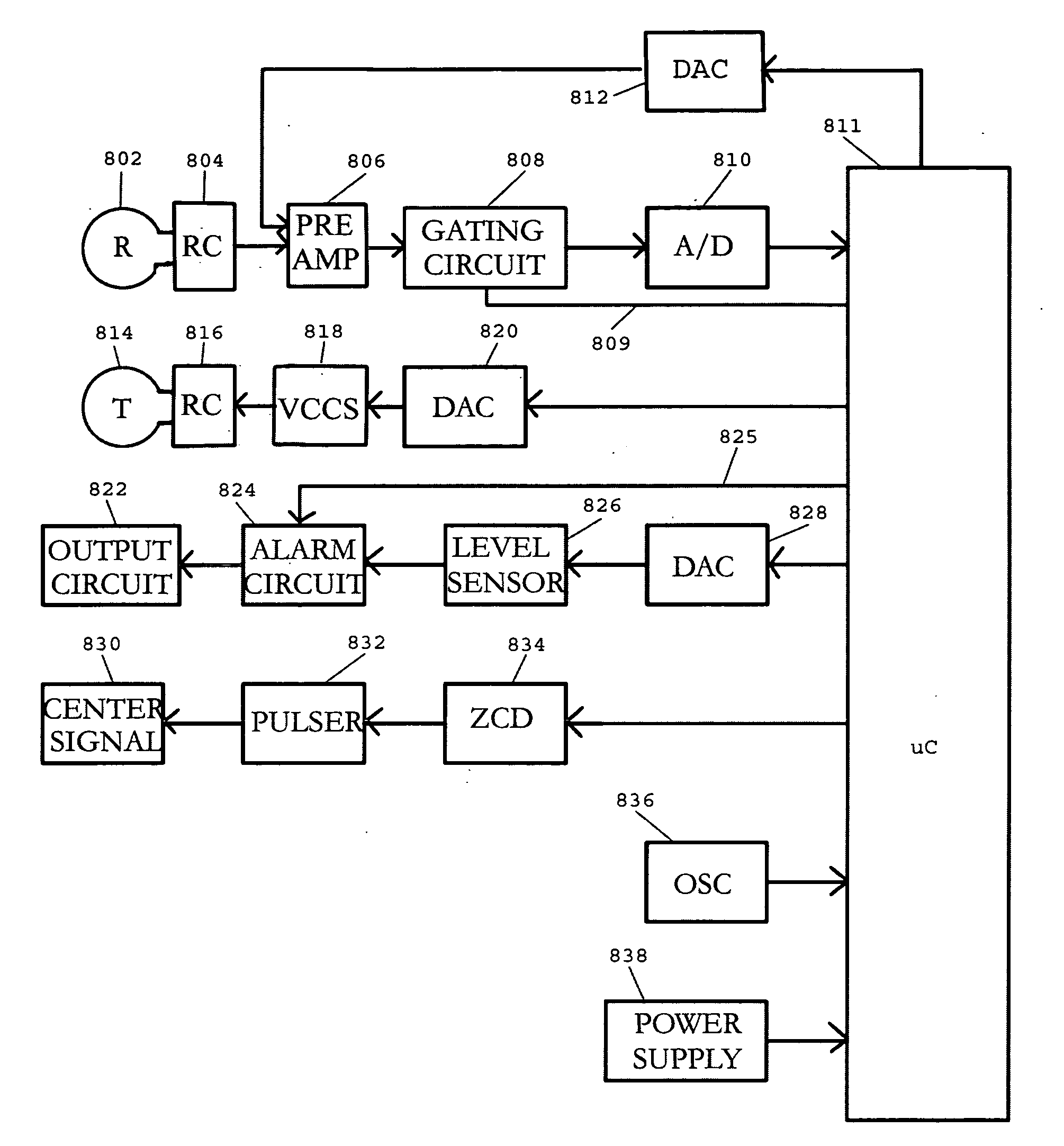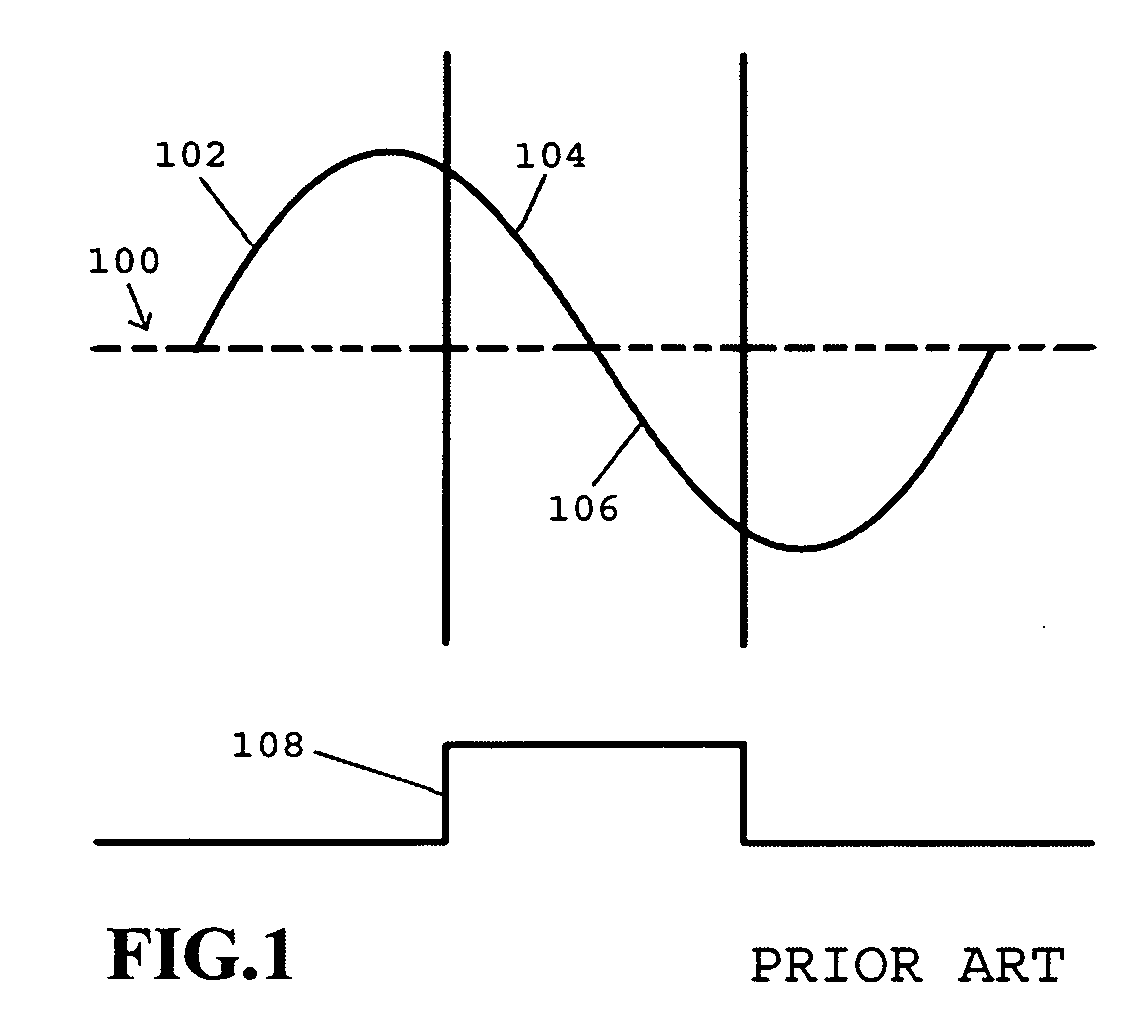Apparatus and method for detecting and identifying ferrous and non-ferrous metals
a technology of ferrous metals and detectors, applied in the field of metal detectors, can solve the problems of insufficient reliability of ferrous metal identification, inability to meet the demands of the market place, and complex methods used to separate them, so as to achieve the shortest recovery time and reliably identify ferrous and non-ferrous targets.
- Summary
- Abstract
- Description
- Claims
- Application Information
AI Technical Summary
Benefits of technology
Problems solved by technology
Method used
Image
Examples
Embodiment Construction
[0212]FIG. 8 shows a block diagram of the preferred embodiment of the invention. Receiver coil 802 is connected to the input of preamplifier 806 which feeds an amplified signal to gating circuit 808. The output of the gating circuit is connected to analog-to-digital converter 810, which interfaces with microcontroller 811. The gating pulses for circuit 808 are generated by the processor 811 and delivered via connection 809.
[0213]R-C network 804 provides critical damping of the receiver coil
[0214]Processor 811 feeds a digitally stored waveform to digital-to-analog converter 820 and the corresponding analog signal is fed to voltage-controlled current source 818, which energizes transmitter coil 814. The shape of the current wave form is shown in FIG. 3-A
[0215]The transmitter coil is terminated by R-C network 816, to minimize oscillations following an abrupt change in the coil current. In conjunction with a low transmitter coil inductance, the component parameters in the voltage-contro...
PUM
 Login to View More
Login to View More Abstract
Description
Claims
Application Information
 Login to View More
Login to View More - R&D
- Intellectual Property
- Life Sciences
- Materials
- Tech Scout
- Unparalleled Data Quality
- Higher Quality Content
- 60% Fewer Hallucinations
Browse by: Latest US Patents, China's latest patents, Technical Efficacy Thesaurus, Application Domain, Technology Topic, Popular Technical Reports.
© 2025 PatSnap. All rights reserved.Legal|Privacy policy|Modern Slavery Act Transparency Statement|Sitemap|About US| Contact US: help@patsnap.com



